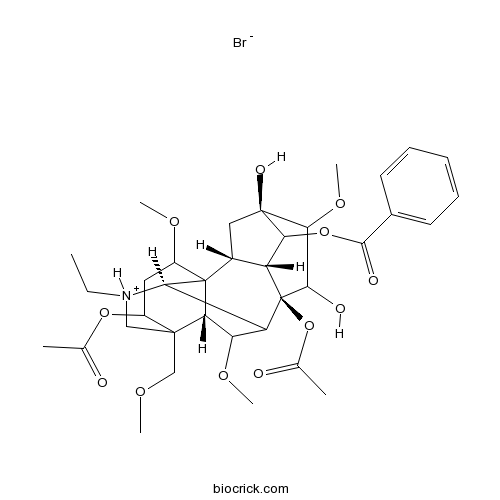Ampelopsis aconitifolia
Ampelopsis aconitifolia
1. The products in our compound library are selected from thousands of unique natural products; 2. It has the characteristics of diverse structure, diverse sources and wide coverage of activities; 3. Provide information on the activity of products from major journals, patents and research reports around the world, providing theoretical direction and research basis for further research and screening; 4. Free combination according to the type, source, target and disease of natural product; 5. The compound powder is placed in a covered tube and then discharged into a 10 x 10 cryostat; 6. Transport in ice pack or dry ice pack. Please store it at -20 °C as soon as possible after receiving the product, and use it as soon as possible after opening.
Natural products/compounds from Ampelopsis aconitifolia
- Cat.No. Product Name CAS Number COA
-
BCN2407
Acetylaconitine77181-26-1
Instructions

Metal bioaccumulation in plant leaves from an industrious area and the botanical garden in Beijing.[Pubmed: 16295909]
The concentrations of Fe, Mn, Al, Zn, Pb, Ni, Cr, and As were measured in soils and leaves from 21 plant species growing on hills near the Beijing Steel Factory (BSF) and 17 plant species in the Beijing Botanical Garden (BBG). The results showed that soils from BSF were Zn contaminated according to the threshold of natural background of China. There was a metal contamination of the soils by Ni, and Cr in BSF comparing with those in BBG. The comparison between concentrations of metals in leaves from both sites indicated that, in general, accumulation of metals in the leaves of the same species was significantly different between the two sites. Even within the same locality each species accumulation of metals was significantly variable. The study aimed to screen landscape plants for the capacity to clean-up toxic metals in soils, and developed an overall metal accumulation index (MAI) for leaves and then categorized the MAI that can be applied broadly in the selection of species in polluted areas. To do this, the spectrum of MAI values were divided into four classes: strongly accumulated (SA or grade I), moderately accumulated (MA or grade II), intermediately accumulated (IA or grade III), and weakly accumulated (WA or grade IV). The results showed that elemental association between Fe, Al, Ni, and As was generally highly correlated with each other in the sampling sites. This may suggest their common biochemical characteristics. Generally, those species containing strong and moderate accumulation in both sites are considered including Vitex negundo, Broussonetia papyrifera, Ulmus pumila, and Rubia cordifolia. At BSF and other industrial sites with a similar ecosystem, strong and moderate accumulation species include Sophora japonica, Ampelopsis aconitifolia var. glabra, Platycladus orientalis, Wikstroemia chamaedaphne, Cleistogenes squarrosa, Grewia biloba, and in BBG, in addition Setaria viridis, Cotinus coggygria, Lespedeza floribunda, Rhamnus parvifolia, Lespedeza tomentosa.


